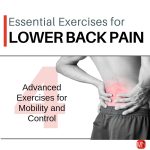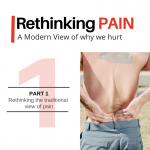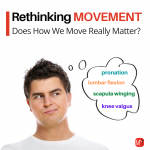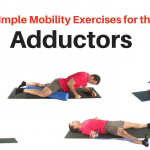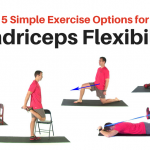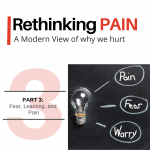Developing strength and endurance is a common goal in lower back rehabilitation. So many exercise programs here focus around trying to create a more “stable” spine. Here we see exercises like planks, side-planks, bird-dogs, and bridges as the primary staple in so many rehab plans.
But there are several problems with this approach.
First, these are isometric-based exercises performed in a static, “neutral” position. Many people believe this will make the muscles more capable of holding the spine in these “safer” postures during movement. But this thinking is wrong. Just because we train the spine in a specific position does not mean the body will start to somehow adopt this posture with real-world activities. Movement is far more complicated than that.
Furthermore, there is no ideal or safest posture for the lower back. The lower back needs to move to both function properly and to stay healthy. So if the spine is going to flex and bend and move, we better train it this way.
Specific Adaptation to Imposed Demands
Another misconception is that muscle strength is a general or universal property. That a muscle is either strong enough, or it’s too weak. But contractile strength is highly dependent on muscle length and position. So a muscle being strong in one position doesn’t automatically mean it will also be strong in other positions. How capable a muscle is in generating force in a particular position is more dependent upon whether it has been trained in that position. This is the S.A.I.D. principle (Specific Adaptation to Imposed Demands).
This has massive implications with strength training for the lower back. If we are training the lower back muscles only in a neutral range, as so often is done, sure the muscles will get stronger. But only around that posture or within a narrow range. But these strength gains won’t automatically carry over to other positions.
So what happens when we find ourselves outside of that narrow range we spent so much time training? In this scenario the body will be less prepared to deal with or tolerate these positions. This is the more likely scenario to cause injury. It’s not so much that too much flexion or extension is bad. It’s that the body is less capable of tolerating these untrained positions.
So we need to stop thinking about training the spine to avoid these “dangerous” postures. A better (and more realistic) approach is to develop a better capacity to control and tolerate these postures that we will inevitably find ourselves in.
Strength Exercises Build More Than Muscle
Most people think of strengthening exercises as a way to build muscle. But the benefits of strength training extend far beyond the muscular system. Resistance training improves the strength of all types of connective tissue. So arm curls at the gym improve muscle strength. But the physical stress incurred through these curls will also create more robust tendons, stronger ligaments, thicker bone, and healthier cartilage in and around the elbow.
But if joints don’t move they are deprived of the stress needed to stimulate and maintain tissue structure and integrity. Here we can see that it’s not just movement itself that needs to be considered. But also the effort or force requirements that matter.
Of course, this is a different type of strength. It’s tissue strength as opposed to muscle strength or force production. This refers more to stress tolerance and tissue resiliency. Here stronger tissues can tolerate more force or tensile strain before damage occurs.
Why does this matter?
Because stronger bones, tendons, ligaments, and intervertebral discs are more resilient. Like how a stronger rope can tolerate more force before it yields. Think of the young athlete on the soccer field. She takes a fall then jumps back up to join the play. But a similar fall in an 80 year old woman with osteoporosis leads to a hip fracture. What’s the difference? The stronger bone of the young athlete can better tolerate the force of the fall, whereas the weaker, osteoporotic hip cannot.
This may seem like an extreme example, so here’s another more common scenario to drive this home. Think of the sciatica patient whose symptoms begin after a routine task, such as bending forward. These patients often assume the injury resulted from that instance forward bending. But it is more likely that the disc was getting progressively weaker over time from inappropriate or inadequate stress. The acute event was simply the proverbial straw on the camel’s back.
These patients are often confused on why this has happened. In their words, they “didn’t do anything”. But that’s the point. If there is not an ongoing, deliberate attempt to get and keep the body strong and healthy it won’t happen on its own.
Remember tissue isn’t free. It costs metabolic energy to build and maintain bones, ligaments, and intervertebral discs. And your body is a great conservationist when it comes to energy. It won’t spend its valuable energy resources to maintain tissue that isn’t absolutely necessary. This again is the use-it-or-lose-it principle. In other words, we need to move the spine through a full range of motion on a very regular basis. But sometimes we also need to move through these ranges with more resistance and heavier loads.
Planks, Bridges, And Bird-Dogs Aren’t Enough
So heavier loads stimulate tissue strength and growth. But we can’t forget about specificity. Remember tissue growth and adaptation is controlled on a cellular level, through mechanotransduction. So only the cells that experience this stress will adapt and change.
Keeping this in mind, we can again see the limitations of traditional exercises like bridges, side planks, and bird-dogs. As these are isometric exercises they do not train the spinal joints through their available ROM. As noted above, this has implications for muscle strength. But now we can see how this has implications for joint and connective tissue health as well.
If we are only training the joints within very limited ranges and positions, the stress is thus confined to these narrow ranges. The tissues in these outer ranges and positions are deprived of the stress needed for structural health and resiliency.
That doesn’t mean planks are bad.
Before moving on I should make one thing clear. I am not suggesting planks or bridges are bad. They will improve basic muscle strength and endurance. This is good. They may also have powerful effects that influence a patient’s symptoms as well. This may occur by affecting pain processing, or by changing a patient’s beliefs or mindset. This is also good. But I do suggest that if our goal is to build optimal health and function of the spine, isometric exercises are not enough. We need to include and incorporate better exercise options for training strength and endurance of the lower back
And we talk about exacly how to do that in Part 2 of this article series.


